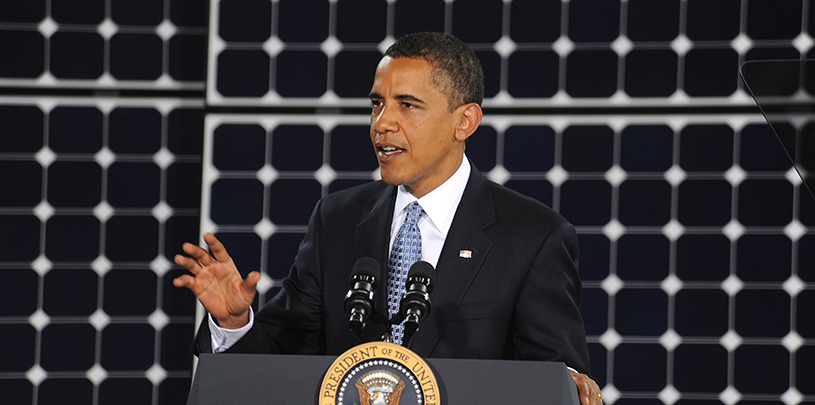
 by Claire Martini, UPLIFT and Youth Engagement Coordinator, Americorps
by Claire Martini, UPLIFT and Youth Engagement Coordinator, Americorps
When you hear the words “Clean Power Plan,” what comes to mind? I’d bet that for many of us, the phrase might not conjure much more than an image of President Obama posing with solar panels.
Since the dawn of the Industrial Revolution, coal has been the powerhouse of the United States, spewing unlimited amounts of pollution into the atmosphere. Today, power plants are the largest source of carbon dioxide emissions in the country. It’s time to clean up our act.
This summer—for the first time in the United States—the Environmental Protection Agency (EPA) established new rules aimed at reducing carbon emissions from power plants. Packaged as the Clean Power Plan, these regulations are a noteworthy step in addressing climate change.
National Goal: By 2030, reduce carbon dioxide emissions by 32 percent
While the Clean Power Plan establishes national standards, it also specifies state-by-state targets. These targets reflect each state’s available resources and emissions reduction potential.
To reduce carbon pollution, states can use a combination of renewable energy (which produces no carbon), and energy efficiency. Generating and using electricity more efficiently not only reduces green house gases but also protects air quality, benefits public health, safeguards the plateau’s crown jewel landscapes, and stimulates the economy by sparking green innovation.
At this point in the planning process, your input matters. The EPA is accepting comments on the federal Clean Power Plan until January 21, 2016. Once the federal plan is finalized, states can adopt it, select parts of it to include in their own state plans, or develop a stand-alone state plan. The federal plan will be implemented in states that don’t develop one.
Help us make the federal Clean Power Plan as strong as possible by signing our petition ›
Individual states are also submitting comments on the EPA’s proposed federal plan. A group of public health, social justice, and environmental organizations, including the Grand Canyon Trust, recently submitted comments to the Arizona Department of Environmental Quality (ADEQ) to consider for inclusion in its comments to the EPA.
Cutting carbon emissions is critical for the Colorado Plateau. Climate change will amplify both drought and flood conditions, leading to fewer available water resources and rising temperatures across the Southwest.
The Clean Power Plan benefits the Colorado Plateau, and the nation. To make the Clean Power Plan the strongest possible tool to lower carbon emissions, our key messages for the EPA are:
Arizona Governor Katie Hobbs is the latest elected official to call for an environmental review of Pinyon Plain uranium mine.
Read MoreDr. Laura Crossey explains what scientists know about groundwater in the Grand Canyon region.
Read MoreMore than 275,000 pounds of radioactive materials imported from the Japan Atomic Energy Agency headed to Utah's White Mesa Mill.
Read More